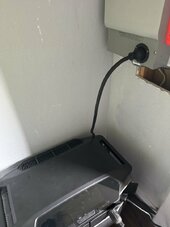for code compliance your DC wires must be in metal from the point it enters the building until it connects to the MPPT. So EMT from the outside, up through the wall, into a metal box with a metal cover on it and a metal whip to where it connects. The faceplate just has a center round hole in it for the MC to connect to it with a generic MC to knockout connector. You can get it by the foot with wire in it at home depot or anyplace that sells wire by the foot. Make sure to get the connector for the open end so any sharp edges are covered. This all needs to have a ground attached to it so it isn't floating.
For the THHN - you need to run 14awg or larger - typically the THHN at the hardware store is 75c and good to 15amps max. You can get 90c THHN with a higher ampacity.
See this post for an explaination.
Just putting this thread together as a place for me to post answers to common questions I see over and over. Whatever you read below is my opinion - read at your own risk - I found them all in the cellar at the end of the hall in the bottom of a locked filing cabinet stuck in a disused...

diysolarforum.com
Note - you cannot run MC outside unless it is the water tight version.
The in metal requirement means the isolator needs to be in a metal case. Vevor sells some that are everything needed but they aren't UL listed. It will however stop a fire from shorted cables.
Also - fuse/breaker is not required on a single string nor is an isolator since it is ground mount.





